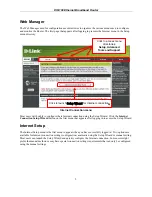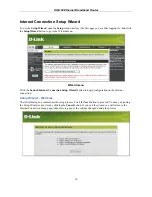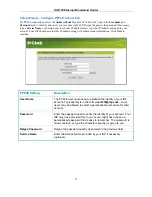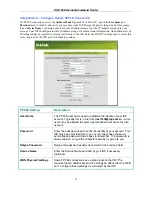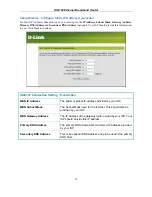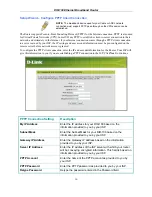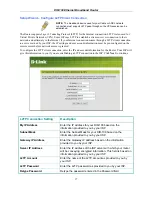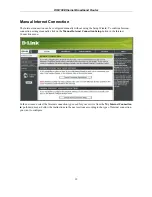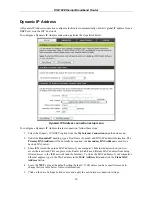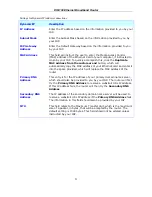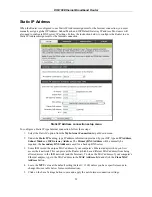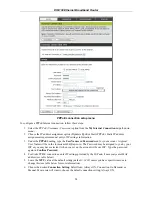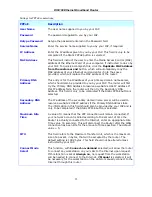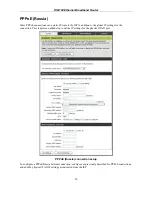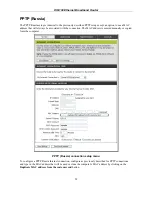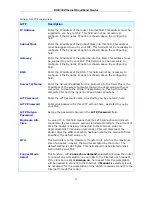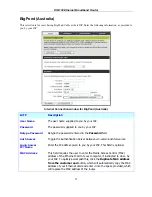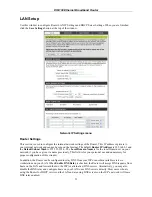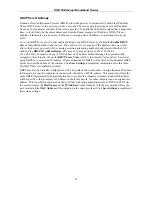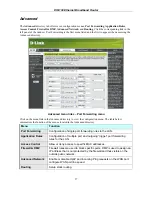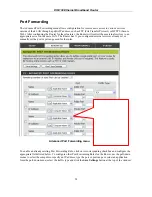
DIR-100 Ethernet Broadband Router
Settings for Static IP Address connections:
Static IP
Description
Host Name
This field will require the user to enter the host name of the
connection, if instructed by your ISP. If not instructed, the user may
leave this field blank or leave the default name of
DIR-100
as the host
name.
MAC Address
This field will instruct the user to enter the Media Access Control (MAC)
address of the Ethernet Card of your computer, if instructed to do so by
your ISP. To quickly accomplish this, click the
Duplicate MAC address
from the customer end
button, which will automatically copy the
MAC address of your Ethernet card and enter it into the space
provided, which will replace the MAC address of the router.
Primary DNS
Address
This entry is for the IP address of your primary domain name server,
which should also be provided to you by your ISP. The router will first
try the Primary DNS Address to resolve a website’s URL IP address. If
this IP address fails, the router will then try the Secondary DNS
Address.
Secondary DNS
Address
The IP address of the secondary domain name server will be used to
resolve a website’s URL IP address if the
Primary DNS Address
fails.
The information in this field should also be provided by your ISP.
MTU
This field refers to the Maximum Transfer Unit, which is the maximum
size of a packet, in bytes, that will be accepted by the router. The
default setting is 1500 bytes. This field should not be altered unless
instructed by your ISP.
PPPoE
PPP or Point-to-Point protocol is a standard method of establishing a network connection/session between
networked devices. Different forms of PPP include PPPoA and PPPoE (discussed below) involve an
authentication process that requires a username and password to gain access to the network. PPPoE (PPP
over Ethernet), as described in RFC 2516, is a method of using PPP through the Ethernet network.
To configure the connection for PPPoE, perform the steps listed below. Some of the settings do not need to
be changed the first time the device is set up, but can be changed later if you choose. The information that is
to be provided in this window must be given to you by your ISP and must be carefully configured. Any small
discrepancy will send the wrong message to your ISP’s server and inhibit your connection.
There are two ways to configure the PPoE connection on the router, one is for a
Dynamic PPPoE
configuration, which means the router will implement some settings automatically through DHCP, such as
the router’s IP address and the default gateway. The other is through a
Static PPPoE
connection, in which
the user must configure the IP address and the DNS addresses automatically.
Follow the instructions below to configure the Router to use a PPPoE Internet connection.
23

